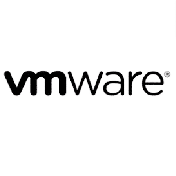Seminarinhalt
In diesem Training lernen Sie:
- Sehen Sie sich das AWS Well-Architected Framework an, um sicherzustellen, dass Sie die besten Cloud-Designpraktiken verstanden haben. Beantworten Sie Umfragefragen, während Sie einer grafischen Präsentation folgen.
- Demonstrieren Sie die Fähigkeit, Amazon Simple Storage Service (Amazon S3) Virtual Private Cloud (VPC)-Endpunktverbindungen in einer Laborumgebung zu sichern.
- Erfahren Sie, wie Sie mithilfe von AWS Organizational Units (OUs) und Service Control Policies (SCPs) mit AWS Single SignOn eine zentralisierte Berechtigungsverwaltung implementieren und Risiken reduzieren können.
- Vergleichen Sie die Berechtigungsverwaltungsfunktionen von OUs, SCPs und AWS SSO mit und ohne AWS Control Tower, um Best Practices basierend auf Anwendungsfällen zu ermitteln.
- Besprechen Sie AWS-Hybridnetzwerkdesigns, um den steigenden Datenverkehr zu bewältigen und die Remote-Arbeit zu optimieren und gleichzeitig die Sicherheitskonformität mit FIPS 140-2 Level 2 oder Level 3 sicherzustellen.
- Entdecken Sie die verfügbaren Lösungen und Produkte für die Gestaltung einer hybriden Infrastruktur, einschließlich des Zugriffs auf 5G-Netzwerke, um den Service zu optimieren und die Latenz zu reduzieren und gleichzeitig eine hohe Sicherheit für kritische On-Premises-Anwendungen aufrechtzuerhalten.
- Entdecken Sie Möglichkeiten zur Vereinfachung der Verbindungskonfigurationen zwischen Anwendungen und Hochleistungs-Workloads in globalen Netzwerken
- Demonstrieren Sie die Fähigkeit, ein Transit-Gateway in einer Laborumgebung zu konfigurieren
- Identifizieren und diskutieren Sie Containerlösungen und definieren Sie Optionen für das Containermanagement
- Erstellen und Testen eines Containers in einer Laborumgebung
- Untersuchen Sie, wie die AWS-Entwicklertools die CI/CD-Pipeline mit Updates auf Basis nahezu Echtzeitdaten optimieren.
- Identifizieren Sie die Anomalieerkennungs- und Schutzdienste, die AWS zur Abwehr von DDoS-Angriffen anbietet.
- Identifizieren Sie Möglichkeiten zum Sichern von Daten während der Übertragung, im Ruhezustand und bei der Verwendung mit AWS Key Management Service (AWS KMS) und AWS Secrets Manager.
- Bestimmen Sie die beste Datenverwaltungslösung basierend auf der Zugriffshäufigkeit und den Anforderungen an Datenabfragen und -analysen.
- Richten Sie einen Data Lake ein und untersuchen Sie die Vorteile dieser Art von Speicherkonfiguration zum Crawlen und Abfragen von Daten in einer Laborumgebung.
- Identifizieren Sie Lösungen zur Optimierung von Edge-Diensten, um Latenzen zu beseitigen, Ineffizienzen zu reduzieren und Risiken zu mindern.
- Identifizieren Sie die Komponenten, die zur Automatisierung der Skalierung globaler Anwendungen mithilfe von Geolokalisierung und Verkehrssteuerung verwendet werden
- Bereitstellen und Aktivieren eines AWS Storage Gateway-Dateigateways und von AWS DataSync in einer Laborumgebung
- Überprüfen Sie die AWS-Kostenmanagementtools, um die Kosten zu optimieren und gleichzeitig Geschwindigkeit und Leistung sicherzustellen
- Überprüfen Sie die von AWS bereitgestellten Migrationstools, -dienste und -prozesse, um effektive Cloud-Betriebsmodelle basierend auf Anwendungsfällen und Geschäftsanforderungen zu implementieren.
- Belegen Sie Ihre Fähigkeit, die im Training erworbenen technischen Kenntnisse und Erfahrungen zur Verbesserung von Geschäftspraktiken anzuwenden, indem Sie ein Capstone-Projekt abschließen.
Programm
Module 1: Reviewing Architecting Concepts
- Group Exercise: Review Architecting on AWS core best practices
- Lab 1: Securing Amazon S3 VPC Endpoint Communications
- AWS Organizations for multi-account access and permissions
- AWS SSO to simplify access and authentication across AWS accounts and third-party services
- AWS Control Tower
- Permissions, access, and authentication
- AWS Client VPN authentication and control
- AWS Site-to-Site VPN
- AWS Direct Connect for hybrid public and private connections
- Increasing bandwidth and reducing cost
- Basic, high, and maximum resiliency
- Amazon Route 53 Resolver DNS resolution
- AWS Storage Gateway solutions
- On-demand VMware Cloud on AWS
- Extending cloud infrastructure services with AWS Outposts
- AWS Local Zones for latency-sensitive workloads
- Your 5G network with and without AWS Wavelength
- Simplifying private subnet connections
- VPC isolation with a shared services VPC
- Transit Gateway Network Manager and VPC Reachability Analyzer
- AWS Resource Access Manager
- AWS PrivateLink and endpoint services
- Lab 2: Configuring Transit Gateways Advanced Architecting on AWS AWS Classroom Training
Module 6: Containers
- Container solutions compared to virtual machines
- Docker benefits, components, solutions architecture, and versioning
- Container hosting on AWS to reduce cost
- Managed container services: Amazon Elastic Container Service (Amazon ECS) and Amazon Elastic Kubernetes Service (Amazon EKS)
- AWS Fargate
- Lab 3: Deploying an Application with Amazon ECS on Fargate
- CI/CD solutions and impact • CI/CD automation with AWS CodePipeline
- Deployment models
- AWS CloudFormation StackSets to improve deployment management
- Common DDoS attacks layers
- AWS WAF
- AWS WAF web access control lists (ACLs), real-time metrics, logs, and security automation
- AWS Shield Advanced services and AWS DDoS Response Team (DRT) services
- AWS Network Firewall and AWS Firewall Manager to protect accounts at scale
- What cryptography is, why you would use it, and how to use it
- AWS KMS
- AWS CloudHSM architecture
- FIPS 140-2 Level 2 and Level 3 encryption
- Secrets Manager
- Amazon S3 data storage management including storage class, inventory, metrics, and policies
- Data lake vs. data warehouse: Differences, benefits, and examples
- AWS Lake Formation solutions, security, and control
- Lab 4: Setting Up a Data Lake with Lake Formation Advanced Architecting on AWS AWS Classroom Training
Module 11: Large-Scale Applications
- What edge services are and why you would use them
- Improve performance and mitigate risk with Amazon CloudFront
- Lambda@Edge
- AWS Global Accelerator: IP addresses, intelligent traffic distribution, and health checks
- Lab 5: Migrating an On-Premises NFS Share Using AWS DataSync and Storage Gateway
- On-premises and cloud acquisition/deprecation cycles
- Cloud cost management tools including reporting, control, and tagging
- Examples and analysis of the five pillars of cost optimization
- Business drivers and the process for migration
- Successful customer practices
- The 7 Rs to migrate and modernize
- Migration tools and services from AWS
- Migrating databases and large data stores
- AWS Schema Conversion Tool (AWS SCT)
- Use the Online Course Supplement (OCS) to review use cases, investigate data, and answer architecting design questions about Transit Gateway, hybrid connectivity, migration, and cost optimization
Zielgruppen
- Cloud architects
- Solutions architects
- Anyone who designs solutions for cloud infrastructures
Vorkenntnisse
- Kenntnisse und Erfahrungen mit zentralen AWS-Diensten aus den Kategorien Compute, Storage, Networking und AWS Identity and Access Management (IAM)
- Teinahme an dem Training Architecting on AWS classroom training oder
- Erlangung der AWS Certified Solutions Architect – Associate certification oder
- Mindestens 1 Jahr Erfahrung im Betrieb von AWS-Workloads



